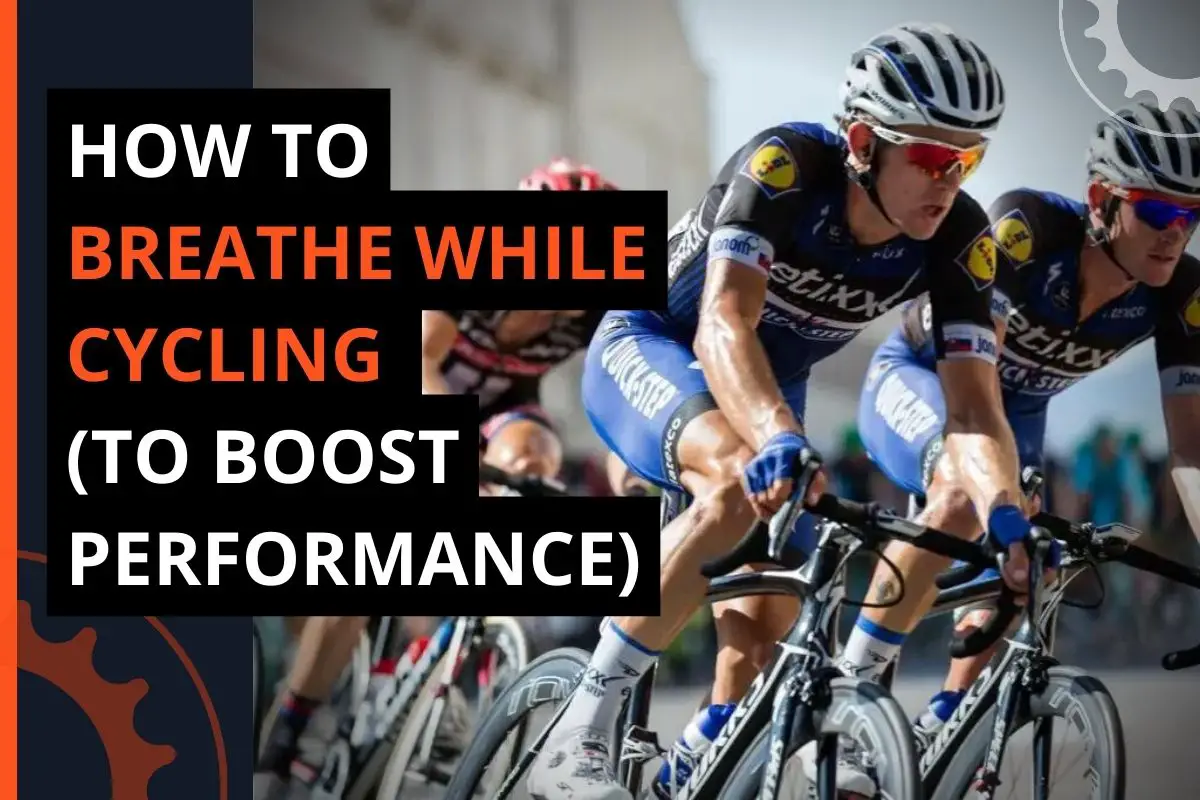Welcome, my fellow aspiring cyclists, to this comprehensive guide on how to breathe while cycling. Mastering your breathing technique is an essential yet often overlooked aspect of cycling. In this blog post, we’ll unlock the secrets of efficient oxygen consumption, unravel the mysteries of diaphragmatic breathing, and help you pedal your way to peak performance.
It’s time to say goodbye to gasping for air on those grueling hill climbs and hello to a newfound sense of stamina and endurance. We’ll dive deep into the common breathing mistakes cyclists make while also providing you with the most effective breathing rhythms for different cycling intensities. Ready to ride like the wind? Let’s take a deep breath and begin!
What are the proper breathing techniques when cycling?
Breathing properly while cycling is essential for maintaining good performance and avoiding fatigue. Here are some techniques that can help improve your breathing while cycling:

1. Deep breathing
Taking deep breaths can help you use your lungs to their maximum potential and provide more oxygen to your muscles. To achieve this, inhale deeply and exhale fully, allowing your diaphragm to expand and contract.
2. Engaged breathing
Engaged breathing means that you coordinate your breathing with your movements while cycling. This can help you maintain your focus during tough terrains and reinforce positive breathing techniques.
3. Practice breathing techniques
Do off-the-bike exercises to improve your breathing on the bike. One such exercise involves exhaling, holding your breath, and walking, then increasing the steps or pedal strokes with each repetition.
4. Performance breathing technique
This technique involves inhaling for two counts, holding your breath for two counts, and exhaling for four counts. Some cyclists may find this count to be too shallow and may need to adjust it to fit their needs.
State Bicycle Co. Black Label 6061

State Bicycle Co. Black Label 6061
Why is proper breathing important for cyclists?
Proper breathing is important for cyclists because it can help them perform better and avoid fatigue. Here are some key benefits:
1. Efficient oxygen delivery
Engaging in a circumferential type of breathing that engages all the respiratory muscles can help cyclists breathe more efficiently and get the most oxygen to their muscles.
2. Improved performance
Research has shown that improving breathing can lead to better performance in cycling. Practicing breathing techniques off the bike can help cyclists breathe better on the bike and perform at their best.

3. Optimal breathing mechanics
Breathing deeply through the nose so that the belly goes up and down rather than the chest can improve breathing mechanics and make breathing more efficient.
4. Maximize the potential of the lungs
Breathing deeply and avoiding sipping the air can help cyclists use their lungs to their maximum potential, providing more oxygen to their muscles.
5. Reduced fatigue
Deep breathing and other breathing techniques can help reduce fatigue and help cyclists maintain their focus throughout their route.
What are the things that can prevent proper breathing while cycling?
Several factors can prevent proper breathing while cycling. Here are some examples:
1. Poor position on the bike
An overly aggressive, aerodynamic position can cause discomfort and make it difficult to breathe properly, as the position may restrict the amount of oxygen getting to the lungs.
2. Lack of practice
It takes time to get used to a breathing technique during cycling. Practicing breathing techniques off the bike can improve breathing mechanics and help cyclists breathe better on the bike.
Sipping air instead of breathing deeply can limit the amount of oxygen getting to the lungs and prevent proper breathing while cycling.
3. Weak diaphragm
The diaphragm plays a major role in pulling air into the lungs. If it is weak, it can make it difficult to breathe properly. Breath training can help make the diaphragm stronger.
4. Inefficient breathing
Sipping air instead of breathing deeply can limit the amount of oxygen getting to the lungs and prevent proper breathing while cycling. To maximize the potential of the lungs, it is important to breathe deeply.
5. Lack of circumferential breathing
Engaging all the respiratory muscles through circumferential breathing can help cyclists breathe more efficiently while cycling. Breathing laterally with the chest, abdomen, and back are some of the mechanics of full breathing that can improve cycling breathing.
If you want even more tips and insights, watch this video called “Breathing 101: How to Breathe More Efficiently While Cycling (Ask a Cycling Coach 257)” from the TrainerRoad YouTube channel.
Conclusion
Well, my cycling aficionados, it’s time to wrap up this whirlwind tour of the world of breathing while cycling. After all, there’s no better way to ride the “oxygen express” than by mastering your breath! So, did we breathe new life into your cycling routine? Did we cover everything you wanted to know? Let me know in the comments section below—I read and reply to every comment.
If you found this article helpful, share it with a friend, and check out my full blog for more tips and tricks on cycling and other fitness adventures. Thanks for reading, and may you forever ride like the wind, fueled by the power of your mighty lungs!
Key takeaways
This article covered how to breathe while cycling. Here are some key takeaways:
- Proper breathing is essential for optimal cycling performance.
- Common breathing mistakes include shallow breathing, holding one’s breath, and breathing too rapidly.
- Diaphragmatic breathing allows deeper breaths, providing more oxygen and increasing endurance.
- Different cycling intensities require suitable breathing rhythms, such as 3:3 for endurance rides and 2:2 for high-intensity intervals.
- Off-the-bike exercises can help strengthen respiratory muscles and increase lung capacity.















